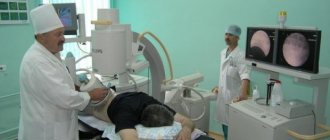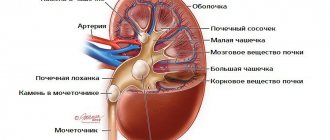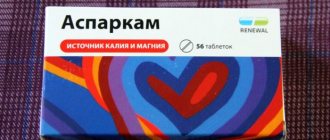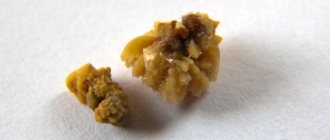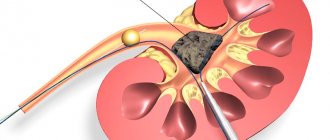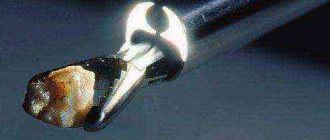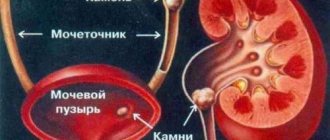Prices Doctors Info
Sign up
| Kibets Sergey Anatolievich Urologist-andrologist, doctor of the highest category Ask a question Make an appointment View reviews |
| Opolsky Anton Boleslavovich Urologist-andrologist, oncourologist, doctor of the highest category Ask a question Make an appointment View reviews |
| Kalinina Svetlana Alexandrovna Urologist-andrologist Ask a question Make an appointment View reviews |
| Mingbolatov Feyzula Shakhbolatovich Urologist-andrologist, oncologist, candidate of medical sciences, doctor of the highest category, associate professor of the Department of Urology of the People's Friendship University of Russia, Honored Doctor of the Republic of Dagestan Ask a question Make an appointment View reviews |
| Mingbolatov Feyzula Shakhbolatovich Urologist-andrologist, oncologist, candidate of medical sciences, doctor of the highest category, associate professor of the Department of Urology of the People's Friendship University of Russia, Honored Doctor of the Republic of Dagestan Ask a question Make an appointment View reviews |
| Mingbolatov Ayatulla Shakhbolatovich Urologist-andrologist of the highest category, Ph.D. Ask a question Make an appointment View reviews |
| Opolsky Anton Boleslavovich Urologist-andrologist, oncourologist, doctor of the highest category Ask a question Make an appointment View reviews |
| Kalinina Svetlana Alexandrovna Urologist-andrologist Ask a question Make an appointment View reviews |
| Kibets Sergey Anatolievich Urologist-andrologist, doctor of the highest category Ask a question Make an appointment View reviews |
Need more information?
Thank you for your request. Your application is accepted. Our specialist will contact you as soon as possible Dear patient, for all applications submitted from 22.00 to 07.00 we will contact you before 12.00 the next day. If your question is urgent, please call our 24/7 contact center +7
Need more information?
Did not find an answer to your question?
Leave a request and our specialists will advise you.
Thank you for your request. Your application is accepted. Our specialist will contact you as soon as possible Dear patient, for all applications submitted from 22.00 to 07.00 we will contact you before 12.00 the next day. If your question is urgent, please call our 24/7 contact center +7
By clicking on the button, you consent to the processing of your personal data
Contact lithotripsy is the most effective method for treating urolithiasis, nephrolithiasis and cholelithiasis. During the procedure, an endoscope is inserted inside, with the help of which kidney, urinary or gallstones are crushed. The procedure is minimally invasive, bloodless, safe and painless. As a result of this effect, stones located in the gall or bladder, ureter or kidneys turn into dust and are then excreted from the body naturally.
Lithotripsy is performed using a modern combined ultrasound/pneumatic device SWISS LithoClast Master (Switzerland). The use of high-tech equipment and extensive experience of doctors allows us to effectively get rid of stones of any location, size and structure, including dense and coral-shaped ones. You can undergo the procedure at one of the branches of the SM-Clinic network of medical clinics in Moscow. The price is indicated in the price list.
Characteristics of the disease
Urolithiasis, which in professional language is called “urolithiasis,” is an extremely dangerous disease that significantly complicates the patient’s life.
Its main characteristic is the formation of kidney stones, which during movement provoke severe pain.
Doctors note that the disease is still difficult to treat and in most cases is severe.
If the disease is neglected, the patient will suffer from severe renal colic; the sensations can be so unpleasant that the person will once again try not to move.
Most patients with this pathology are forced to take painkillers for a long time. It is important to understand that such remedies only alleviate pain and temporarily block it, but do not help solve the problem.
Doctors warn patients that the presence of kidney stones cannot be ignored, as they can cause serious complications and even lead to the death of the patient.
What is laser lithotripsy
Laser lithotripsy is a modern technique for crushing and removing stone-like deposits from the kidneys. The undoubted advantage of the procedure is that withdrawal is carried out by using the natural urinary tract.
Since no pneumatic lithotripter is used during the event, there is no risk of injury to the urinary tract. Numerous clinical studies have confirmed that the technique is as safe as possible and can be used at any age and even while pregnant.
Most leading experts prefer this method of crushing stones, regardless of their size.
Since the treatment uses a laser beam with a power exceeding 80 W, it is capable of completely destroying a neoplasm of any strength.
Possible complications
In some cases, distance lithotripsy is associated with some complications. They are divided into the following types:
- complications due to the passage of stone fragments;
- complications due to the action of the shock wave on nearby tissues.
The first complication includes blockage (obstruction) of the ureter by the remains of a damaged stone.
If the stone is large, large fragments may accumulate in the main part of the ureter, causing obstruction in the urinary tract.
Basically, the resulting obstruction in the form of pain in the lumbar region is similar to renal colic and requires instrumental intervention.
Stones are removed from the urinary tract using a ureteroscope or secondary crushing is done.
Complications after obstruction of the urinary canals by stone fragments include pyelonephritis before the appearance of urosepsis, bruising, and hemorrhage into the perinephric tissue.
But such complications rarely appear and do not reduce the benefits of the technology.
Necessity of the procedure
Laser stone crushing is often prescribed in the following cases:
- drug treatment is ineffective and does not provide improvement within 2 months;
- the diameter of the stones is more than 0.5 cm. If the stone has grown to such a size, there is no chance that it will come out on its own;
- due to its specific location, the stone disrupts the functioning of the kidney;
- the patient was diagnosed with stones not only in the kidney, but also in the bladder or ureter;
- concomitant inflammatory processes of the kidneys.
Preparation
Without exception, all patients undergoing stone crushing must undergo tests
The process of preparing a patient for surgery directly depends on the chosen crushing technique. Non-invasive remote crushing is carried out without any serious preparation of the patient. When performing a minimally invasive operation, the patient must undergo a medical examination, as well as treatment of identified concomitant pathologies, which may be grounds for limiting anesthesia.
Without exception, all patients who are to have stones crushed must undergo a general urine and blood test, be examined for the presence of infectious processes, take a coagulogram and undergo an ECG, as well as a chest x-ray. To accurately determine the size, shape and location of the stone, as well as to monitor changes in the kidneys, the patient is prescribed CT, excretory urography and ultrasound.
Important: to prevent postoperative infectious complications, patients are prescribed a course of antibiotics, as well as the correct drinking regimen, since this is very important for the quick and painless release of stone fragments.
How crushing works
Laser removal of stones is carried out only if the suspected diagnosis is confirmed. Immediately before the procedure, the patient is given an anesthetic.
After a few minutes, when the anesthesia takes effect, the physician carefully inserts a thin cord with a flexible endoscope and a laser at the end into the opening of the urethra.
The endoscope is advanced to the desired location in the kidney along the urinary tract. Since the procedure uses an endoscope, the physician visually monitors the progress of the cord and adjusts the trajectory if necessary.
When the endoscope with laser is brought to the stone, the doctor turns on the device and the laser beam grinds down the stone. When the deposit is crushed, a special composition is injected into the kidney to flush out the residue. Usually, after treatment, the fragments come out on their own through the urinary tract.
The next 5-8 days after the procedure, frequent urination with a slight discharge of blood is possible (the appearance is caused by the movement of fragments along the urinary tract).
If during the postoperative period the patient experiences severe pain, he is prescribed painkillers. During rehabilitation you need to take the following medications:
- drugs that promote the dissolution of neoplasms of various nature (Cyston, Urocholum);
- antispasmodics (No-spa);
- antimicrobials and antibiotics (Ceftriaxone);
- non-hormonal anti-inflammatory drugs (Ibuprofen).
Experts assure that the effectiveness of laser lithotripsy is more than 95%.
Types of deletion
Patients are interested in which type of laser crushing is most optimal. Doctors assure that, regardless of the equipment used, the treatment is carried out the same way; laser crushing of stones can only be of one type.
Ultrasound crushing of kidney stones
Let's look at how the crushing process itself is carried out.
Before the crushing procedure, ultrasound and urographic examinations are performed to understand the location and position of the stuck kidney stone.
After this, the crushing time is set.
Before the procedure, it is necessary that the patient’s intestines are as empty as possible. Otherwise, it may interfere with the procedure and reduce the accuracy of ultrasound.
For this, evening and morning enemas before the procedure and a special diet may be prescribed.
The patient is placed on the table and fixed. In this case, the side with the kidney stone is turned towards the crushing apparatus.
The doctor carefully determines the location of the device’s impact, conducting a short control using X-rays.
Then the exposure time of the ultrasonic device is determined (usually about 30 minutes) and the number of strikes on the stone (usually up to 3000 strikes in 30 minutes). And the crushing process begins.
The crushing process itself is non-contact. Next to the patient lying there is a machine that directs ultrasonic waves to the kidney stone. No incisions or other types of medical treatment are performed.
During crushing, the doctor makes several pauses to control the accuracy of the ultrasound.
Advantages and contraindications
Although the technique was introduced relatively recently, it has gained a lot of admirers around the world. This is due to the following advantages:
- After the procedure, the patient will not have any scars or other visible damage;
- the laser allows you to break up the tiniest stone deposits without damaging the surrounding tissues;
- no risk of debris;
- to get rid of a tumor, 1 session is required;
- high performance;
- no pain.
Unlike other methods of crushing stone deposits, laser lithotripsy has only one disadvantage - high cost.
There are few contraindications for the treatment, but you need to know them. The technique should be abandoned in the following cases:
- exacerbation of prostatitis;
- cancer;
- coral stones;
- kidney hematoma;
- poor blood clotting;
- serious condition of the patient;
- severe form of arrhythmia;
- cyst formation in the kidneys;
- purulent and infectious diseases.
The procedure should be carried out with extreme caution in the last months of pregnancy.
Contraindications to lithotripsy
General contraindications to lithotripsy:
- acute pyelonephritis;
- acute renal failure or progression of chronic renal failure;
- low blood clotting (hypocoagulation);
- spinal deformities;
- obesity;
- cardiovascular diseases in the acute stage;
- pregnancy;
- aneurysm of the renal artery and aorta;
- acute gastrointestinal diseases;
- atrial fibrillation;
- menstruation;
- kidney tumors.
The choice of a specific treatment method depends on the individual characteristics of the patient’s disease.
Contraindications to extracorporeal lithotripsy:
- narrowing of the ureter below the stone;
- violation of the excretory function of the kidney;
- acute pyelonephritis or urinary tract infection in the acute stage;
- the size of the stone is more than 20 mm or its high density.
Contraindications to contact lithotripsy:
- urinary system infection in the acute stage;
- ureteral stricture.
Contraindications to percutaneous nephrolithotripsy:
- patient's somatic status
Recovery time
In order for the body to recover faster, it is necessary to strictly follow medical recommendations.
In most cases, in the absence of complications, complete recovery occurs within 8-10 days.
In order for stone fragments to come out faster, the patient initially needs to drink a lot of filtered water (at least 2.5 liters) and adhere to the prescribed diet.
For the first 2 weeks after crushing, the basis of the diet should be vegetables and fruits, as well as foods rich in calcium.
The most important criterion is the absence of physical activity for the first few days.
Indications for surgery
The large size of the stone, due to which it cannot come out on its own, is the first indication for the crushing procedure. If the diameter of the stone exceeds the diameter of the ureter and urethra, it must be broken. Since it can continue to grow or try to come out on its own and block the ureter, thereby disrupting the functionality of the kidney. It is this situation that causes renal colic. There is such a strong pain that you won’t be able to forget it for a very long time. In this situation, it is necessary to act in a timely manner.
Pain is a direct indicator for a crushing operation. Removing a stone by crushing means relieves a person of pain, prevents swelling of the kidney and restores the functionality of the organ.
Patient reviews
After the procedure, some patients shared their opinions, here's what they say.
I had my kidney stones broken up with a laser about 2 years ago. At first, for a long time I did not dare to undergo the procedure, because I considered it something terribly scary. But after a few months I decided, and I’m glad about it, because since then the pain has no longer bothered me. Ivan, 26 years old.
I suffered from urolithiasis for several years. The doctor said that I had kidney stones due to drinking low-quality water with a high content of sediment. And so, when the pain became constant and could not be tolerated, I agreed to laser removal. I’ll say right away that everything went without any discomfort, and now I feel great! Anna, 34 years old.
I was diagnosed with ICD more than 6 years ago. At first, I actually didn’t experience any discomfort and simply forgot about the diagnosis. But after a couple of years the pain became unbearable, I agreed to everything. Of course, laser crushing at that time seemed very expensive to me, but my wife persuaded me. The operation went well, all the stones were broken in 1 session! For the first 3 days I was in the hospital under the supervision of doctors, I followed a diet... as a result, after a week I felt as if I had been born again! Oleg, 52 years old.
Judging by the reviews of people who have experienced this treatment, we can assume that the result really lives up to expectations.
Hakobyan Gagik Nersesovich – professor, doctor of medical sciences, oncologist, urologist in Moscow
The appointment is conducted by a doctor of the highest category, urologist, oncologist, doctor of medical sciences, professor. Author of more than 100 scientific papers.
Urological oncology experience – more than 15 years. Helps men and women solve urological and oncourological problems.
Conducts diagnostics, treatment and complex operations for such diagnoses as:
- tumors of the kidneys and upper urinary tract;
- prostate and bladder cancer;
- urolithiasis disease;
- BPH;
- hydronephrosis, ureteral stricture, etc.
Price
The price for this service may vary greatly depending on the place of residence and the chosen clinic. Today, laser crushing is most often offered by private clinics; the cost of services includes not only the operation itself, but also the initial consultation, anesthesia and postoperative observation.
In Moscow, the average price is from 8,000 to 50,000 rubles. In other cities, the price varies from 4,500 to 39,000 rubles.
Today, laser stone crushing is undoubtedly the best way to combat urolithiasis. Therefore, if your financial situation allows, you should choose this option.
As practice shows, this method is the most effective, painless and never causes complications.
Is additional diagnostics needed before lithotripsy?
It is necessary to obtain consultation before hospitalization
) and perform a standard examination:
- clinical blood test
- general urine analysis
- biochemical blood test (urea, creatinine, total bilirubin, glucose)
- coagulogram (INR, prothrombin, APTT)
- blood test for HIV, RW, HBsAg, HCV;
- blood test for group, Rh factor and antibodies to Rh factor with phenotyping
- ECG
- chest x-ray
May be required
or survey intravenous urography.
If there are indications about the need for additional diagnostics, the doctor will inform you at the consultation.
